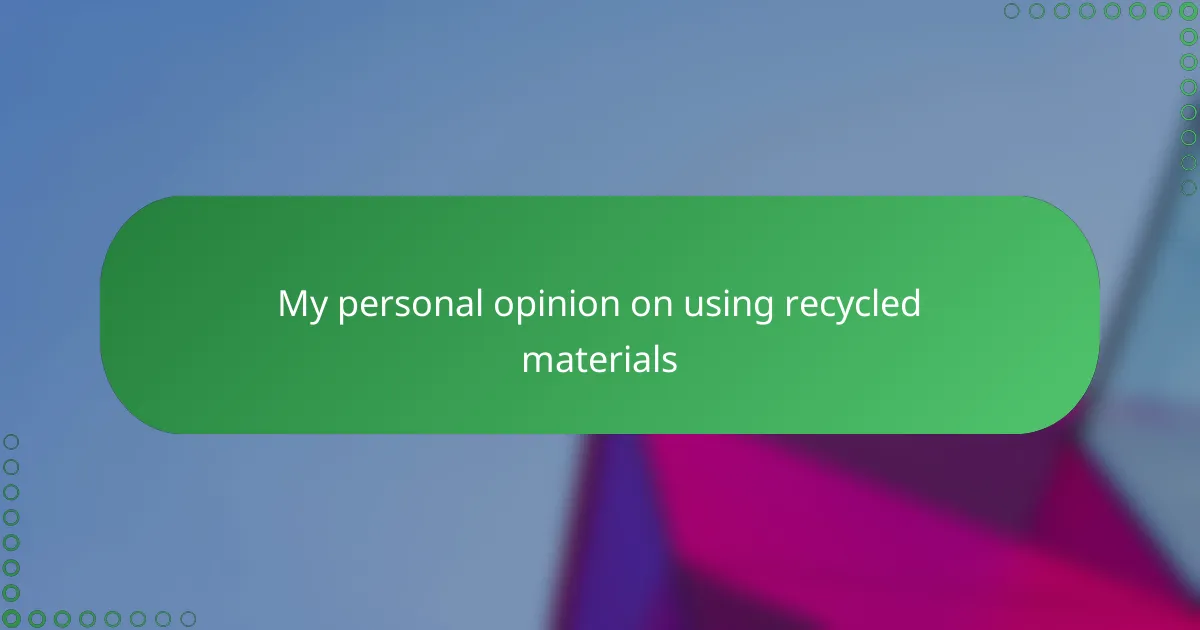Key takeaways
- Recycled materials offer unique textures and colors, adding character to crafts while promoting sustainability.
- Working with recycled materials requires patience for cleaning and preparation but leads to more meaningful and durable creations.
- Embracing imperfections and unpredictability can spark creativity and inspire new design ideas.
- Experimenting with different combinations and techniques enhances the crafting experience and often leads to unexpected, satisfying results.
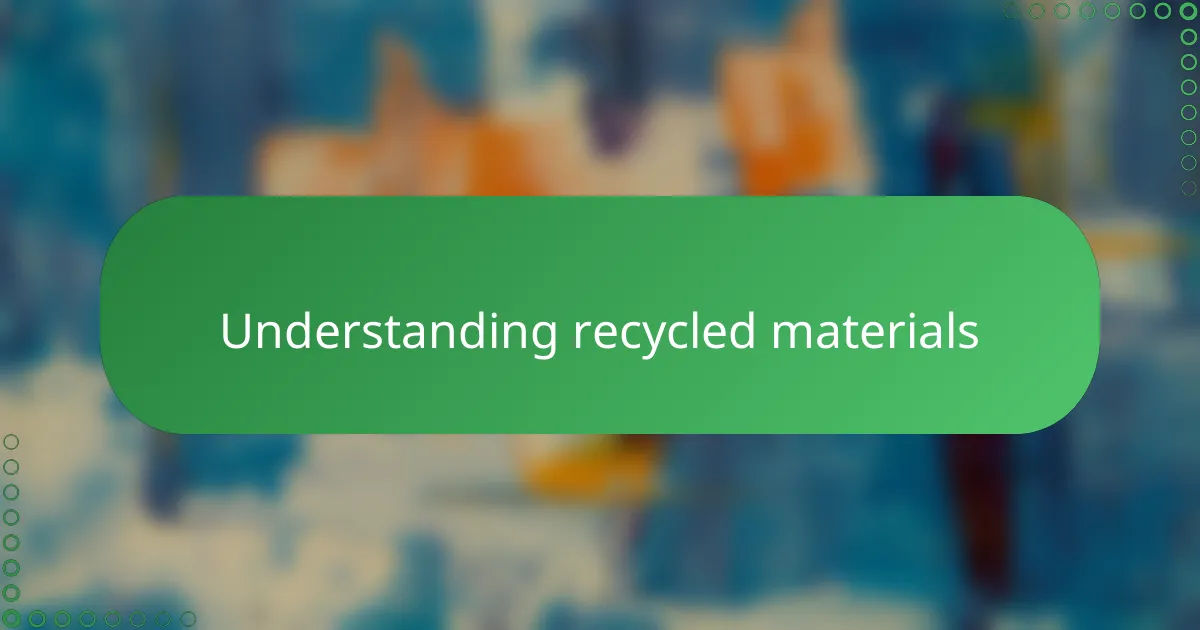
Understanding recycled materials
Recycled materials, to me, are like giving old stories a second chance—fibers from used paper or discarded textiles can come alive again in new creations. It’s fascinating how something once destined for the trash can transform into beautiful handmade paper, don’t you think? This process reminds me that nothing is truly useless until we decide it is.
When I first started working with recycled materials, I was surprised at how versatile and unique each batch could be. Every sheet carries its own character, shaped by its past life. Have you ever noticed how some scraps can add subtle textures or unexpected colors to your craft? That unpredictability is part of the charm.
Understanding what recycled materials consist of also helps me appreciate the care needed in their preparation. Unlike fresh raw materials, recycled ones often require thorough cleaning and sorting to ensure quality. This step is crucial, and it makes me respect the sustainable effort behind each handmade sheet even more.
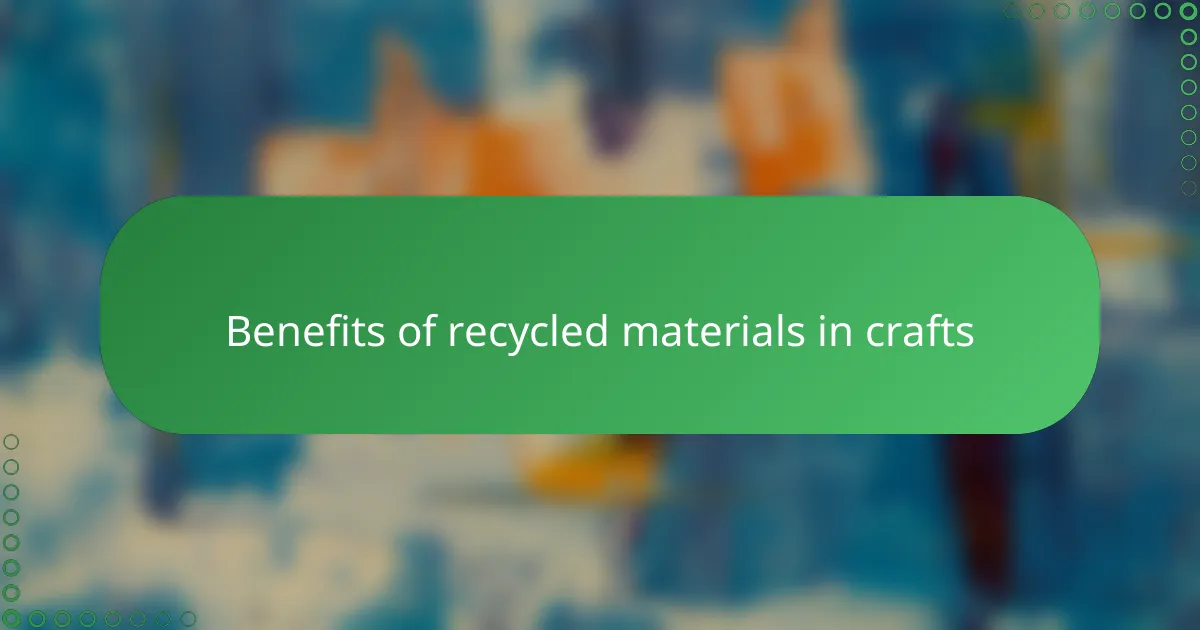
Benefits of recycled materials in crafts
Using recycled materials in my crafts feels like making a meaningful contribution, however small, to protecting our planet. It’s rewarding to know that each piece I create helps reduce waste and conserves natural resources. Don’t you love the idea that your art is part of a bigger movement towards sustainability?
I’ve noticed that recycled fibers often bring a depth and character to my paper that fresh materials simply can’t match. Sometimes, I find unexpected textures or subtle color variations that inspire new creative directions. Isn’t it amazing how these little imperfections add personality and tell a story through the craft?
Another benefit I appreciate is how recycled materials often encourage resourcefulness and innovation. Since the supplies vary, I have to experiment more, which keeps the process exciting and fresh. Have you ever found that working with recycled scraps pushed you to discover techniques you wouldn’t have tried otherwise?
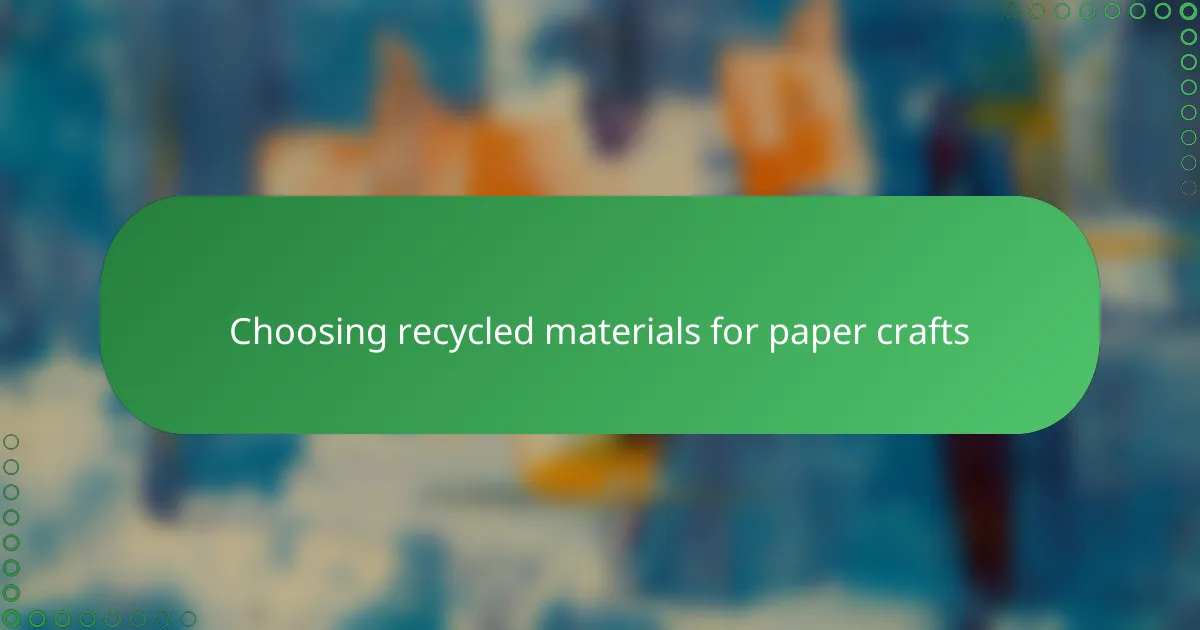
Choosing recycled materials for paper crafts
Choosing recycled materials for paper crafts feels like inviting a patchwork of history into my workspace. I remember the first time I selected scraps from an old notebook and found that the faint lines and faded ink added a subtle narrative texture to my paper—it was like the past whispering through my hands. Have you ever experienced that moment when an unexpected detail in recycled fibers sparks a whole new design idea?
One challenge I often face is deciding which recycled materials will blend well without compromising the strength or appearance of the finished sheet. It’s a bit like being a chef choosing ingredients—some combinations surprise you with harmony, while others call for tweaks and trials. This unpredictability keeps me curious and constantly learning, wouldn’t you agree?
What I truly appreciate is the mindful choice behind each recycled element. Taking time to examine and sort materials feels almost meditative, as if each selection holds a tiny promise of sustainability and creativity combined. Doesn’t it make your work feel more intentional and connected to something bigger than just the craft?
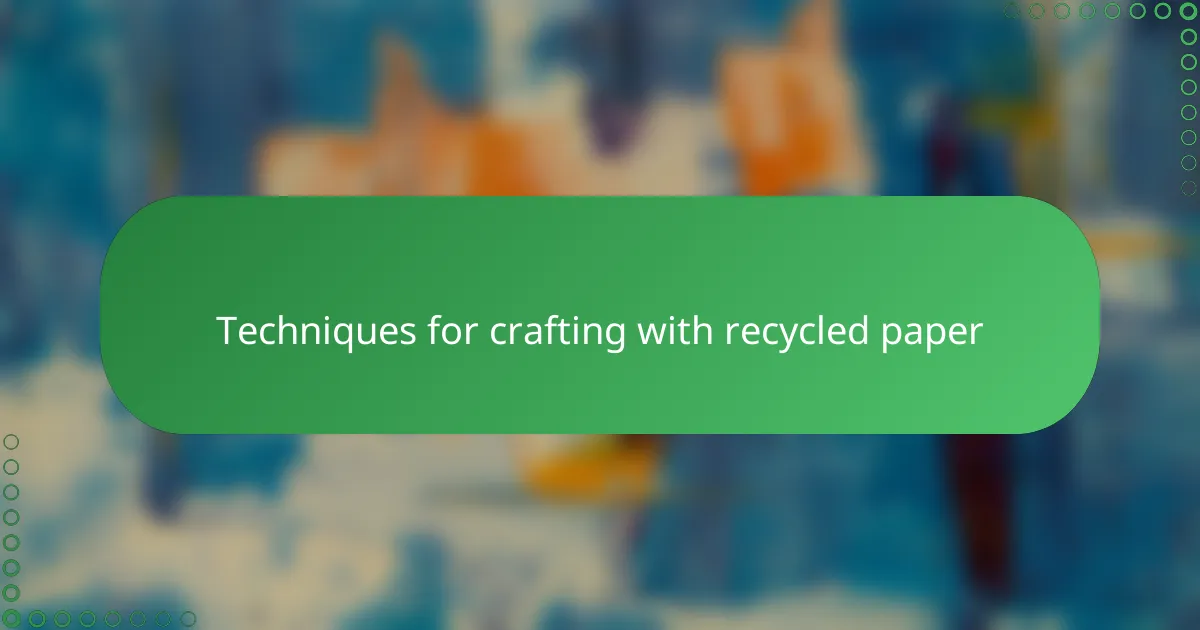
Techniques for crafting with recycled paper
When I first started crafting with recycled paper, one technique that helped me was soaking the fibers thoroughly to soften them. This step makes the pulping process much smoother and helps the fibers bond better, resulting in stronger sheets. Have you tried adjusting soaking times based on the thickness or type of your recycled materials? I found that experimenting here really changes the texture of the finished paper.
Layering fibers is another method I love because it lets me play with textures and transparency. I often combine thinner, more delicate scraps with coarser fibers to create interesting visual effects that surprise me every time. It’s almost like painting with paper—something unexpected happens with each layer, and I’m always eager to see the result.
Pressing and drying techniques also shape my experience with recycled paper. I prefer using simple household items, like a rolling pin or heavy books, which make the process feel cozy and accessible. Does this hands-on approach make the craft feel more connected and rewarding to you, too? For me, it’s these small rituals that turn recycled paper crafting into a heartfelt practice.
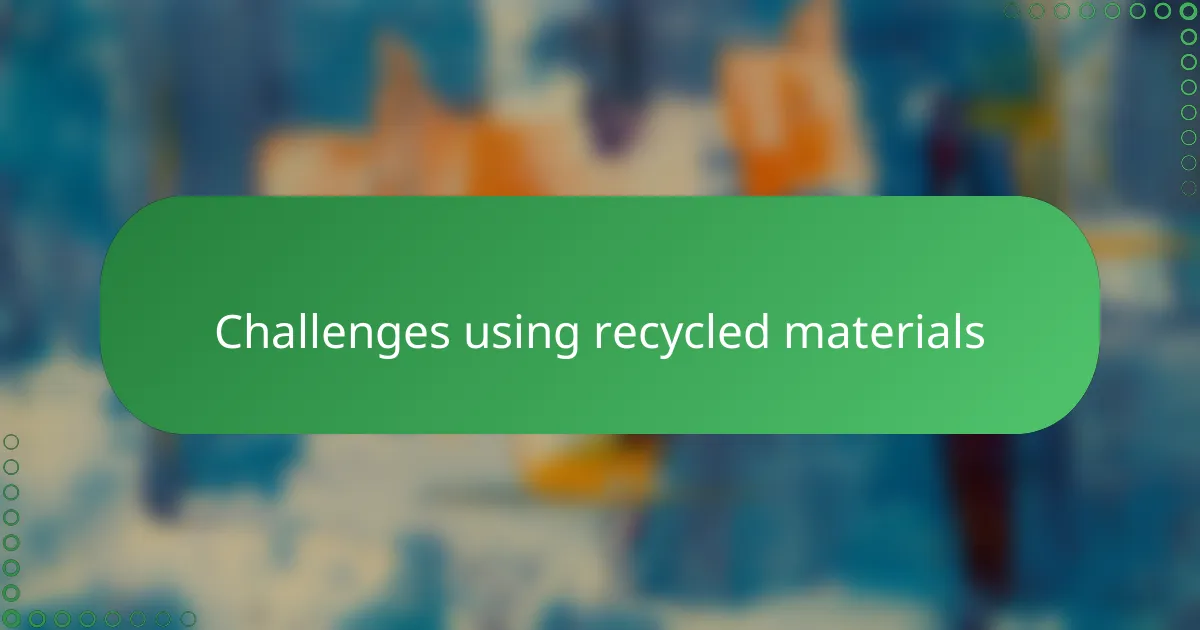
Challenges using recycled materials
Working with recycled materials isn’t always smooth sailing. I’ve often found that the quality can be inconsistent—sometimes the fibers are weak or contaminated, which makes the paper fragile or prone to tearing. Have you ever worried that your beautiful design might not hold up because the material just isn’t quite right?
Another challenge that caught me off guard is the extra time and effort needed to prepare recycled scraps. Sorting, cleaning, and removing inks or adhesives can feel tedious, especially when I’m eager to dive straight into crafting. Yet, I’ve learned that this patience pays off in the final product’s texture and durability—do you think the extra work makes the finished paper more meaningful?
Sometimes, working with recycled fibers means embracing imperfections and unpredictability. I remember a batch where unexpected bits of color and rough patches showed up, which at first frustrated me. But then I realized those quirks added character that no new paper could replicate. Have you found that accepting flaws can actually spark creativity rather than hold you back?
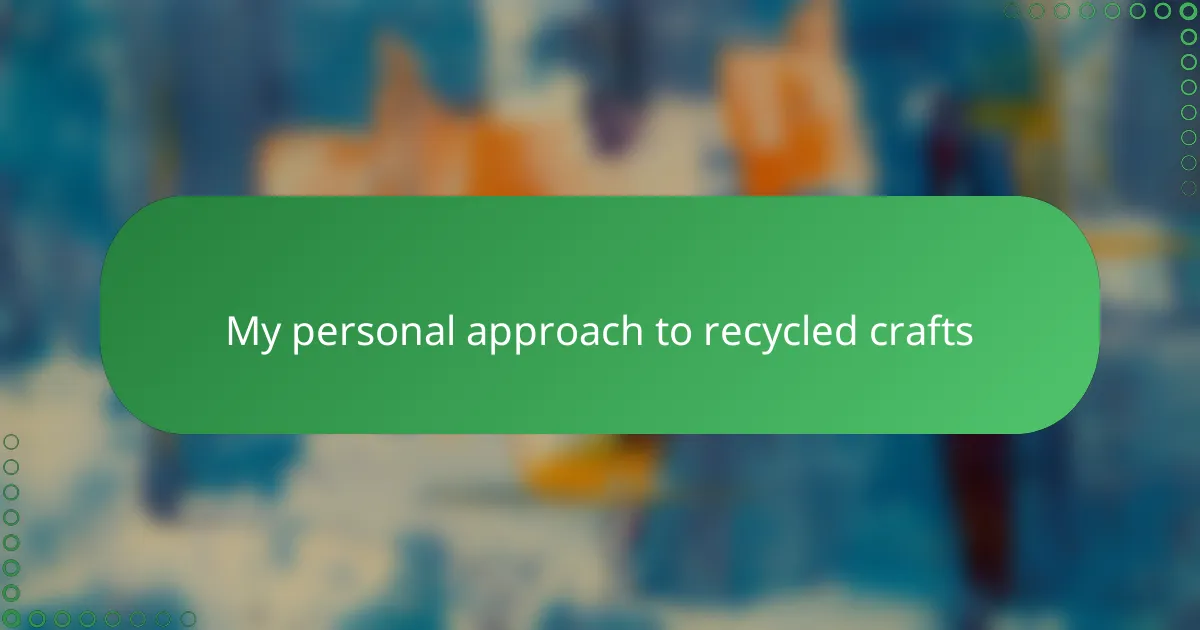
My personal approach to recycled crafts
When I approach recycled crafts, I always start with patience and curiosity. There’s a certain magic in sorting through scraps, wondering what stories they might tell once transformed. Have you ever felt that excitement when a ragged piece turns into something unexpectedly beautiful?
I also like to think of recycled crafting as a balancing act between control and spontaneity. While I carefully choose materials to ensure durability, I leave room for surprises—those little imperfections often inspire my most creative ideas. Isn’t it refreshing when the craft leads you somewhere you didn’t plan?
For me, working with recycled materials is more than a technique; it’s a personal commitment. Each project feels like a small act of care for both the environment and my craft itself. Don’t you find that this intention adds an extra layer of meaning to the handmade pieces you create?
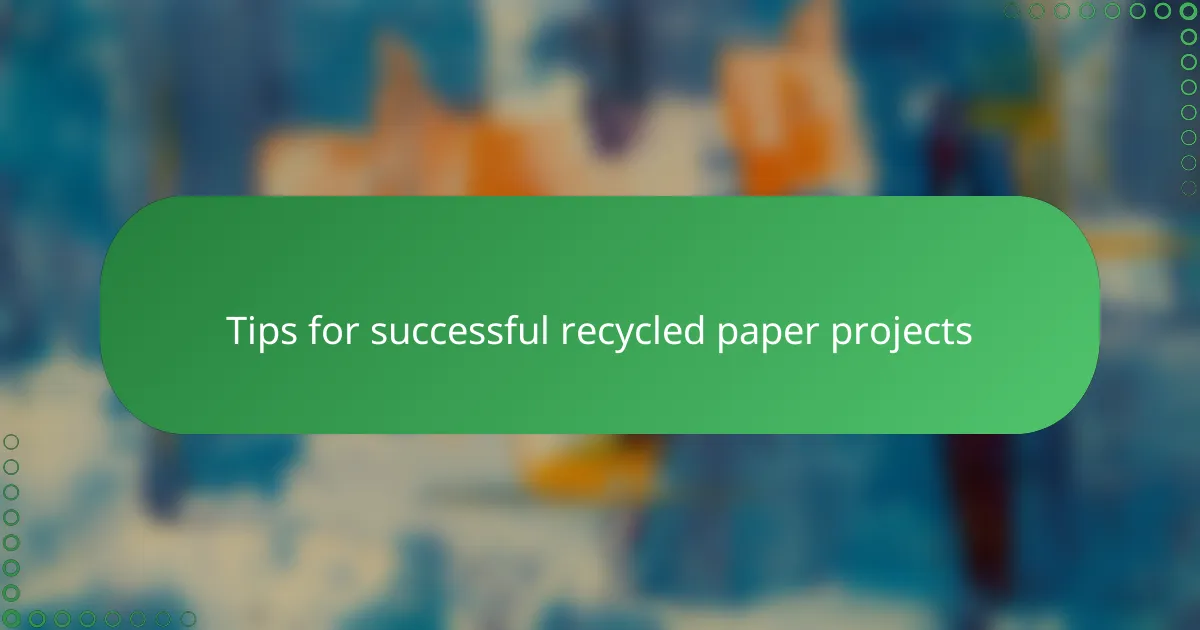
Tips for successful recycled paper projects
One tip I’ve found essential is to always pre-sort and clean your recycled materials thoroughly. Early on, I learned the hard way that leftover glue or tiny staples can cause major headaches during pulping. Have you ever spent extra time picking out little bits, only to realize the final paper feels smoother and stronger? That effort really pays off.
Another thing I’ve noticed is that blending different textures and fiber types can add amazing depth to your sheets. Sometimes I mix soft cotton scraps with sturdier office paper, and the contrast surprises me in the best way. Do you enjoy how these unexpected combos bring your paper to life with more character and resilience?
Finally, don’t shy away from trial and error. I often tweak soaking times or fiber ratios just to see what happens, and honestly, some of my favorite outcomes came from happy accidents. When was the last time you let a mistake guide you toward a creative breakthrough? Embracing those moments keeps recycled projects exciting and truly unique.
